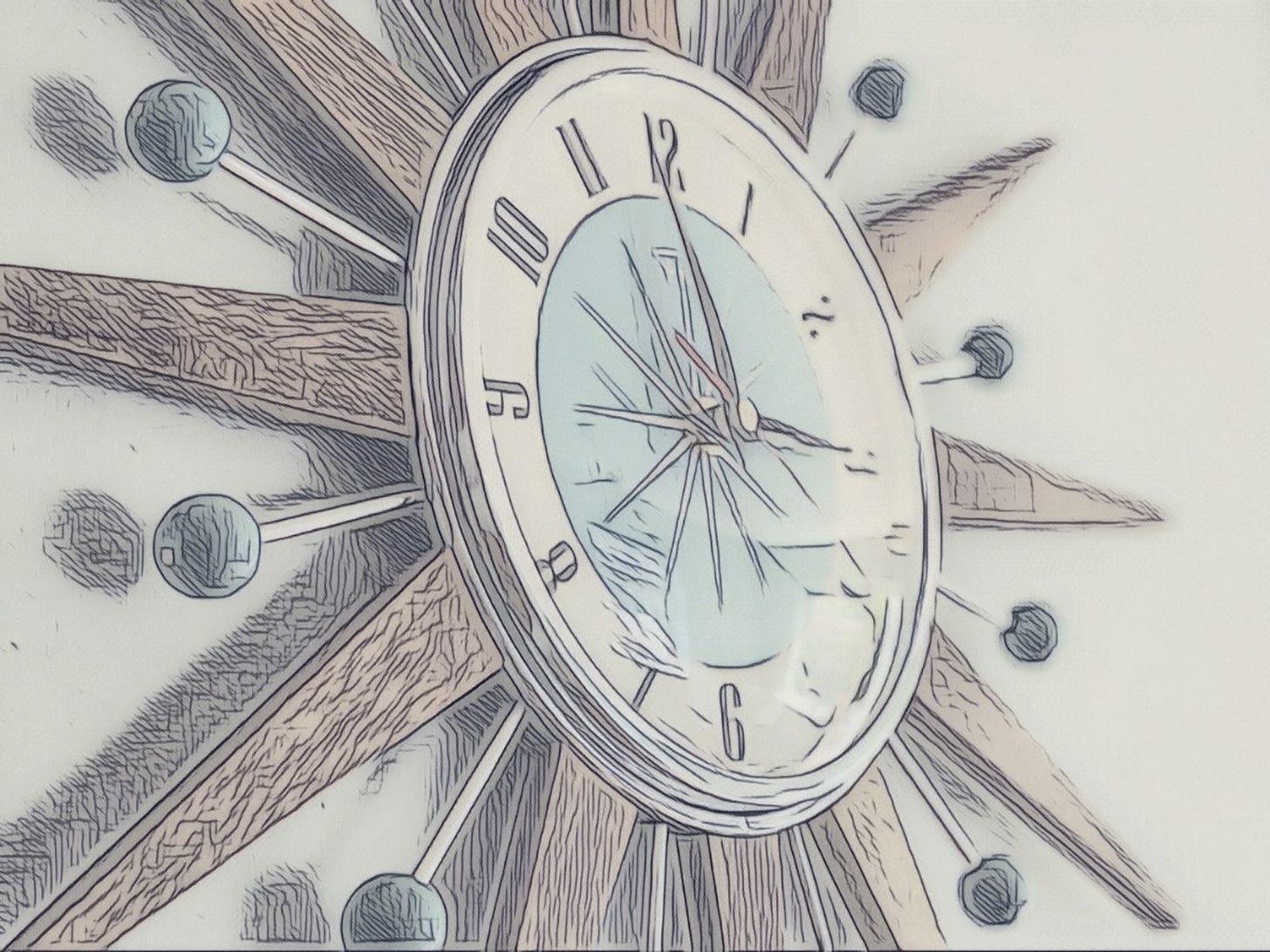Timing is Everything: How Clocks and Timers Can Transform Your Workday
Timers, clocks, and tricks for keeping your day on track in a hybrid world.
We’ve all been there. You glance at the clock, see it’s 9:15am, blink a few times…and somehow it’s nearly noon and you’ve achieved precisely nothing of what you meant to. Hybrid working — whether at home, in the office, or floating between coffee shops and meeting rooms — offers freedom, but it also blurs the boundaries that used to keep time feeling structured.
One simple tool can make a surprisingly big difference: the humble timer.
From old-school ticking kitchen timers to silent countdowns on your smartwatch, clocks and timers can anchor your attention, impose helpful limits, and protect you from spending too much (or too little!) time on your work. Here’s a deep dive into the different ways you can use them — and some of the challenges to watch out for too.
Problem: Time Feels Infinite (Until It Isn’t)
Without the natural start-and-stop cues of office life — the commute, the lunchtime buzz, the colleague who pops by your desk — time can feel oddly elastic. A five-minute check of your inbox can turn into an hour-long expedition. A bit of prep for tomorrow’s meeting eats up half the afternoon.
Timers provide a way to set visible, audible, or tactile boundaries — not just to keep track of time, but to feel it passing.
Idea 1: Use ‘Pomodoro-Style’ Intervals
One oft-quoted approach is the Pomodoro Technique: 25 minutes of focused work followed by a 5-minute break, repeated a few times before a longer pause. It’s designed to reduce mental fatigue and keep your focus sharp.
Now, you really don’t have to stick rigidly to the 25-minute format. Some people prefer 15-minute sprints; others go for 45. The key is to create a defined period for a task and stick to it. A timer marks the start, and just as importantly, it marks the end.
Idea 2: Use a Visual Timer to Stay Grounded
For those who lose track of time easily, a visual countdown timer can be especially effective. These can be physical devices (like a dial-based timer with a shrinking red wedge) or digital apps that show the passing time on screen.
Unlike a clock, which just ticks along, a visual timer creates a sense of urgency and progress. You can see how much time is left — which makes it harder to drift off into unrelated tabs or conversations.
Idea 3: Set Time Limits to Avoid Overworking a Task
Some tasks — emails, reports, slide decks — can expand to fill the time available. If you find yourself tweaking endlessly, timers can impose a gentle upper limit. Set 10 or 20 minutes and aim to stop when the timer goes off.
You might not be ‘finished’, but you’ll often find you’ve done enough — or at least that it’s time to move on and come back later with fresh eyes.
Idea 4: Use a Smartwatch for Timing
One increasingly popular approach is to use a smartwatch timer. Whether you're wearing an Apple or Samsung Watch, a Fitbit, or a Garmin, it’s incredibly easy to flick your wrist, tap a few buttons, and start a countdown — no phone, app, or extra hardware needed.
Smartwatch timers are discreet, travel-friendly, and often come with gentle haptics (vibrations) instead of loud beeping. This makes them ideal for shared spaces or quiet environments.
You could use them for:
Silent Pomodoro sessions during video calls
Capping how long you spend on social media
Nudging yourself to move after long desk sessions
Challenge: Remembering to Respect the Timer
Timers only work if you actually respond to them. It’s easy to hit ‘dismiss’ and keep going — or to set a timer and then ignore it entirely.
Some solutions include:
Placing the timer in your line of sight
Choosing a sound or vibration that’s hard to ignore
Building in a mini ritual when the timer ends (e.g. standing up, moving rooms, stretching)
Challenge: Tech Overload
Timers can start to feel like just one more digital intrusion — especially if you’re already juggling Teams alerts, Slack pings, and meeting notifications. For that reason, you might prefer an analogue option: a ticking kitchen timer, an hourglass, or even a classic wall clock.
Using a non-digital timer can also feel oddly satisfying. Turning a dial or hearing a physical tick brings a sense of presence that’s different from yet another app on your phone.
Idea 6: Clocks Around the House (and Desk)
If timers are about managing short-term focus, clocks are about keeping a broader awareness of the day. Strategically placed clocks — analogue or digital — in your workspace, kitchen, or even bathroom, can help prevent you from falling into ‘timeless’ loops of scrolling, browsing, or fiddling.
And there’s nothing wrong with a slightly quirky approach: some people like having unsynced analogue clocks in different rooms, creating a soft ambiguity that nudges them to check in with time, not just glance at it.
Final Thought: Timers Aren’t About Pressure — They’re About Awareness
Used wisely, timers and clocks aren’t productivity tools in the harsh, hustle-culture sense. They’re reminders. Anchors. Gentle nudges that say, “Hey, this matters — don’t let it drift.”
Whether it’s a smartwatch on your wrist, a tomato-shaped kitchen timer on your desk, or a browser tab quietly counting down, these little tools can help you start tasks sooner, stop them more confidently, and reclaim time that might otherwise just leak away.
So maybe — just maybe — it’s time to start the timer.





